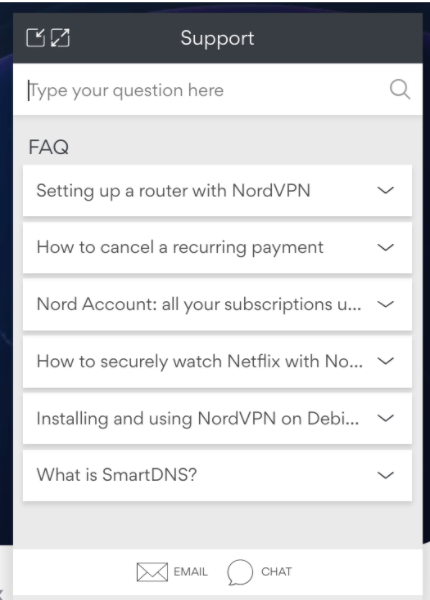Product adoption is not something that companies can afford to ignore. After all, it’s not profitable to build a product that no one is willing to purchase. You need loyal customers that regularly use your product, and product adoption can help you find those customers.
What is product adoption?
Product adoption is the process a consumer takes from discovering a product to becoming a long-term customer. This is usually broken down into 5 product adoption stages (which we’ll discuss in more detail further below).
Product adoption is more than a person registering for a free SaaS product or purchasing a physical product. It’s about if the consumer is regularly using the product and making it part of their lives. When this level of product adoption is achieved, you have earned a loyal customer base that recognizes the value of your product and won’t switch to a competitor.
Product adoption definition
Product adoption is a process that involves people becoming aware of a product and then ultimately deciding if they want to adopt a product into their lives and regularly use it.
What is the product adoption curve?
The product adoption curve is a theory by Everett M. Rogers regarding the adoption of new products into society. There are 5 adopter groups, and they each have their own level of resistance to new innovations. It’s important to know these groups because they will adopt a product at different points of its lifecycle. The 5 adopter groups are:
- Innovators (2.5%): A small but mighty group that isn’t afraid to be the first people to use new products. They tend to be incredibly tech-savvy, don’t mind a few technical issues, and can be an excellent source for feedback.
- Early adopters (13.5%): Early adopters expect products to help meet their needs even if it is fairly new in the market. They can be useful in spreading the word about your new product since they are a larger group than innovators.
- Early majority (34%): This group will only adopt your product once it has gained a reputation and proven itself to innovators and early adopters. They don’t mind taking up new trends, but they have less tolerance for risk compared to previous groups.
- Late majority (34%): The late majority is pretty resistant to change and will only adopt your product if it’s well-developed and experiencing very few technical issues.
- Laggards (16%): Laggards are nearly impossible to get to respond to new innovations. They don’t like change and will only adopt new products when it’s forced to do so.
Why is product adoption important?
A strong new product adoption rate means a higher retention rate and lower churn. It ultimately leads to having a large base of loyal customers that drive predictable revenue for a company.
5 factors that influence product adoption
Everett M. Rogers, along with the product adoption curve, also developed 5 factors that influence product adoption by society. Before a product launch, product managers should evaluate these factors to determine if their product is easily adoptable.
Relative advantage
Consumers need to see that this new product is clearly better than the current product. People are unlikely to change to a different product if they don’t see any benefits to it. In order to influence product adoption positively, product managers will want to communicate why their product has more value than their competitors.
Compatibility
Compatibility refers to a product’s ability to fit into a consumer’s values, needs, and experiences. A consumer will only adopt a product if it can seamlessly integrate into their lives. Product managers will want to do thorough research into their audience to confirm that a product matches their lifestyle.
Complexity
Consumers are less likely to adopt your product if they find it difficult to use or understand. If they view your product as easy to use, consumers are more likely to adopt your product. Product managers may find it beneficial to have a friendly customer support team or a simple onboarding process to make a product as simple as possible.
Trialability
People like to try before they buy. They want to know if it would be worth their time, energy, and investment to adopt a product before they actually purchase it. Product managers will want to find a way for consumers to try their product on a limited basis to encourage trialability.
Observability
Observability refers to a consumer’s ability to see the tangible results of the product. A consumer needs to know that a product actually works and will fulfill their needs. Observability can also refer to a consumer’s awareness of the product or seeing their peers use the product.
5 product adoption stages
Every consumer will go through the same new product adoption process. The product adoption process is made up of 5 stages that show the steps a consumer takes before deciding to adopt or reject a product.
Product awareness
The first stage is when a consumer becomes aware that your product exists. There are a variety of ways they could have discovered your product – it could’ve been an advertisement on social media or a referral from a trusted colleague.
Messaging is going to be a crucial part of the product awareness stage. You’ll want to ensure that your campaign catches the eye of your audience and addresses their needs. This combination will help your audience realize that their product is meant for them.
At this point, the consumer doesn’t know enough about your product to buy it, but they do get their interest piqued enough to learn more about it.
Product interest
Once a consumer becomes interested in your product, they will start researching it. Consumers will start looking into the features, benefits, disadvantages, and pricing.
If you don’t provide enough information about your product, consumers may lose interest and not proceed to the next product adoption stage. It’s essential to have an informative website and knowledgeable customer service to help the consumer with the information-gathering process.
After gathering all this information, the consumer will start to evaluate the product.
Product evaluation
Consumers will consider the information they gathered from your product and then evaluate if it fits their needs. They may compare your product to competitors and try to differentiate what makes you different from them. This stage is key to getting consumers to trial your product.
You may find success in directly addressing how you are different from your competitors. Do you offer a new feature they don’t? Do you have all the same features at a lower price? These types of questions are at the forefront of your consumer’s decision-making, so you want to ensure that your sales team can handle answering these inquiries.
Another way to convince consumers to try out your product is to offer an irresistible deal. You can offer free trials, money-back guarantees, or trial-size products. Consumers will consider deals like this during the product evaluation process, and it could be what ultimately leads them to try your product.
Product trial
First impressions are extremely important, and the customer experience needs to be excellent. The product trial stage is a critical point for consumers to become long-term customers. They aren’t officially committed at this point. Consumers will examine and test your product to see if it meets their standards and needs.
Once a consumer has tried the product, they move on to the final stage of the product adoption process.
Product adoption or rejection
Consumers have tried your product and now they need to decide if they want to adopt or reject it. Satisfied consumers will adopt your product and continue to use it in the future. Existing customers may even evolve into advocates and recommend your product to other people.
Unsatisfied consumers will reject your product and look for alternatives. This is also known as churn.
5 techniques to improve product adoption
There are many opportunities for a consumer to not continue through the product adoption process. That’s why product managers must establish techniques to improve product adoption and ensure customer success.
Here are a few techniques that may improve product adoption.
Survey your customers
Surveys with a limited focus can help yield better answers to analyze. For example, distribute surveys to a targeted group of people instead of gathering feedback from a general audience. Alternatively, you can also choose to focus on getting feedback on a certain feature instead of general feedback on your product.
Don’t forget to analyze your audience that has churned. It can actually be a significant learning opportunity for a product team to learn why their product is causing churn. This can help you identify issues and create solutions that could mitigate the churn.
Have a clear onboarding process
The user experience is one important factor for product adoption. For SaaS products, product managers need to have a great user onboarding experience. Sometimes low adoption rates occur because users aren’t taught how to use the software easily and simply. It could be worth it to review your onboarding process and discover any issues that could prevent user adoption.
Send helpful in-app messages
A little nudge can help users understand and use a product. In-app messages can aid in getting users to do certain actions. It can also be used to collect feedback or educate users on features. You don’t want to overdo it as this could be more discouraging than encouraging.
Have multiple customer support methods
Customer success can be largely dependent on having access to support. A strong customer support base can help lower churn since consumers can easily find answers to their questions. There are multiple ways to support consumers including setting up a live chat with friendly representatives, creating an informative knowledge base, or inserting help center widgets into a software’s UI.
Create a personalized email marketing campaign
Sometimes consumers try your product once or twice, but then stop interacting with it. It may be necessary to re-engage inactive consumers with a personalized email marketing campaign. Email marketing can also be used as a way to onboard new customers.
How to measure product adoption rates?
It’s difficult to calculate product adoption rates because there is no direct formula. Instead, you’ll have to analyze a variety of metrics to get an idea of how product adoption is working. Here are some product adoption metrics to keep track of to determine your customer retention:
- Number of new users vs. number of total users
- Number of users performing core activities for the first time
- How long it takes for users to perform core activities for the first time
- Growth rate of active users
- Percentage of consumers that are active/inactive
- Frequency of purchases
- Conversion rates
3 Product adoption examples
So what are some real-life examples of companies using techniques to influence product adoption? Let’s review 3 product adoption examples.
Amazon
Amazon is using a personalized email marketing campaign to give parents recommendations based on their child’s age. As the child continues to age, parents will receive newsletters that are relevant to what that child needs. This is useful since a 4-month old baby will probably want different toys than a 6-year old does.
NordVPN
NordVPN has a customer support widget available on its website. It automatically opens to FAQ for easy access. Consumers can also search for questions to find answers. This support widget simplifies using the NordVPN product and can help improve product adoption.
Canva
Canva implements a product adoption technique aimed towards consumers that entered the product evaluation stage but didn’t adopt. In this example, it offered another trial for their paid product to consumers that continue to use the free version of Canva. This could be a useful technique to encourage active users to purchase the paid version of Canva.
Final Points about product adoption
Improving your product adoption rate can drastically increase revenue and build a loyal customer base. Product managers can start by determining where your audience is in the product adoption curve and then providing the necessary support to continue to grow. Don’t forget to evaluate your techniques to nurture consumers along the product adoption stages. Analyzing metrics can help you determine where you might be losing potential customers.
Optimizing the product adoption process can aid in your goal to reach your audience and help solve their problems with your product.





